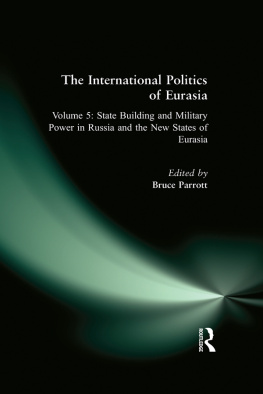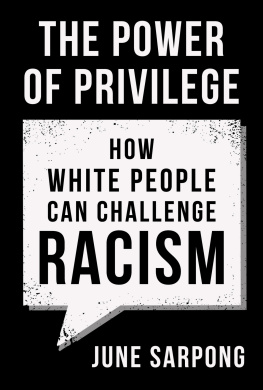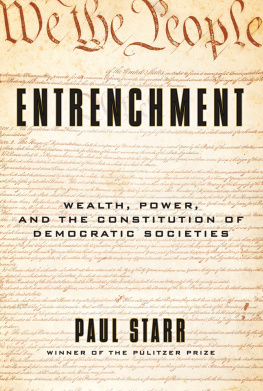History and Power in the Study of Law
NEW DIRECTIONS IN LEGAL ANTHROPOLOGY
EDITED BY
June Starr and Jane F. Collier
Cornell University Press
Ithaca and London
Contents
Preface
A conference called Ethno-historical Models and the Evolution of Law was held in Milan and at Bellagio, Lake Como, Italy, from August 10 to August 18, 1985. The Wenner-Gren Foundation for Anthropological Research and the Rockefeller Foundation provided funding. The conference was organized by June Starr of the Department of Anthropology, State University of New York at Stony Brook, and Jane F. Collier of the Department of Anthropology, Stanford University. The goal was to compare case studies of legal change in particular societies using historical frameworks in order to search for shared questions and methodologies to direct future research.
The twenty anthropologists, sociologists, and law professors from North America and Europe who attended devoted five half-days to discussing seventeen previously circulated papers and four half-days to a general consideration of conference issues. In their discussions, participants focused on the models they were using to analyze the development, change, decay, integration, and articulation of legal systems within specific social units. Professors Elizabeth Colson and William Twining served as commentators, Jessica Kuper was editorial adviser, and Longina Jakubowska and Richard Maddox were rapporteurs.
We soon settled down into a cheerful and sometimes argumentative group. Almost every idea offered was challenged, reanalyzed, and reconstituted. This aspect of the conference is covered in more detail elsewhere.1 By the end of the conference we believed that we had developed new ideas and methods for studying the anthropology of law, and conference participants decided we should publish the papers as a unit in a volume.
Most of the chapters here have been reworked so that they relate to the major intellectual developments of the conference. Authors of six conference papers were offered the opportunity to rewrite their papers or submit different ones. Laura Nader and Francis Snyder submitted different papers, June Starr rewrote hers, and Philip Gulliver, Sally Humphreys, and Robert Hayden chose to publish their papers elsewhere.
We especially wish to thank Lita Osmundsen, past president and director of research at the Wenner-Gren Foundation, for her sustained support of our project. We are also indebted to Nina Watson, who made complicated administrative arrangements go smoothly. Susan Garfield of the Rockefeller Foundation, and the staff at Bellagio, gained our appreciation for creating a tranquil atmosphere in which the only surprises were culinary and intellectual. Linda Josephs quickly and efficiently retyped sections of the manuscript.
We also thank Peter Agree, our editor at Cornell University Press; Peggy Hoover, our copyeditor for the Press; and Roger Sanjek, the series editor, who helped us solve certain problems with the manuscript.
J.S. and J.F.C.
Stony Brook, New York
Stanford, California
1June Starr and Jane F. Collier, Historical Studies of Legal Change, Current Anthropology 28/3(1987):367372.
Contributors
S AID A MIR A RJOMAND , Associate Professor of Sociology, State University of New York, Stony Brook.
V ILHELM A UBERT , Professor of Sociology, University of Oslo, Norway.
A NTON B LOK , Professor of Anthropology, Center for Mediterranean Studies, University of Amsterdam, The Netherlands.
J EREMY B OISSEVAIN, Professor of Anthropology and Director of the Center for Mediterranean Studies, University of Amsterdam, The Netherlands.
B ERNARD S. C OHN, Professor of Anthropology, University of Chicago.
G EORGE A. C OLLIER, Professor of Anthropology, Stanford University.
J ANE F. C OLLIER, Associate Professor of Anthropology, Stanford University.
C AROL J. G REENHOUSE, Associate Professor of Anthropology, Cornell University.
H ANNEKE G ROTENBREG, Contract Research Coordinator for the Anthropological/Sociological Center, University of Amsterdam, The Netherlands.
S ALLY F ALK M OORE, Professor of Anthropology, Harvard University.
L AURA N ADER, Professor of Anthropology, University of California, Berkeley.
J UNE N ASH, Professor of Anthropology, City College, City University of New York.
L AWRENCE R OSEN, Professor of Anthropology, Princeton University.
F RANCIS G. S NYDER, Reader in European Community Law, University College, London, formerly of the Law Faculty at the University of Warwick.
J UNE S TARR, Associate Professor of Anthropology, State University of New York, Stony Brook.
J OAN V INCENT, Professor of Anthropology, Barnard College.
Introduction: Dialogues in Legal Anthropology
June Starr and Jane F. Collier
Should social anthropologists continue to isolate the legal as a separate field of study?1 In seeking explanations for legal change, most of the contributors to this volume have crossed the boundaries between legal anthropology and other subfields of social anthropology. By making asymmetrical power relations and world historical time essential to their analyses, the contributors reach conclusions that are different from those of social scientists working without temporal or power dimensions.
Several types of questions unite the chapters in this book: What legal resources are available to groups competing for state power? How do legal ideas privilege some at the expense of others? How do weaker groups overcome obstacles created by the legal order? What explains the lengthy continuities among certain legal ideas and social orders? Historical analysis thus becomes a dynamic aid in understanding the role law plays in changing asymmetrical power relationships among social groups, and how that role is limited. Instead of treating change and power differences as variables that complicate a structural or structural-functional analysis of dispute management, most of the contributors to this volume focus on power differentials to understand both the course of legal change and the persistence of certain legal ideas and processes through time. Rather than ask how societies achieve the peaceful resolution of disputes, most ask how individuals and groups in particular times and places have used legal resources to achieve their ends. Instead of focusing on either normative systems or dispute processes, the chapters analyze the relationship of law to wider systems of social relations. We have thus modified the field of legal anthropology in the process of revitalizing it.
Breaching subdisciplinary boundaries has allowed most of us to enlarge our vision of legal anthropology in a decade that finds some law researchers questioning the usefulness of a separate subfield of anthropology of law. Several scholars have called for abolition of the anthropology of law, while others predict its demise (Comaroff and Roberts 1981; Snyder 1981a, 1981b; Chanock 1983; Francis 1984). Comaroff and Roberts, for example, doubt the value of distinguishing the legal as a discrete field of inquiry (1981:243). Arguing that the aim of social anthropology is to study total social systems, they suggest that instead of isolating dispute processes or rule systems for separate study, anthropologists should study disputes and invocations of rules for what they reveal about systemic processes. Snyder also suggests that legal anthropology is too narrow: The anthropology of law is a myth if conceived as the search for a historical or cross-culturally valid features of law, or alternatively, as the reduction of historically and culturally specific normative forms to ethnographic descriptions of individual behavior (1981b: 164). He also advocates redirecting anthropologists interested in legal issues toward the study of a total system, but his system is the historical expansion of Western capitalism. The future development of legal anthropology lies not only in elucidating the relationships between social action and cultural ideologies, but also in grasping the extent to which these relationships and the wider social processes of which they form a part are the product of specific historical and economic conditions (ibid., p. 164).













